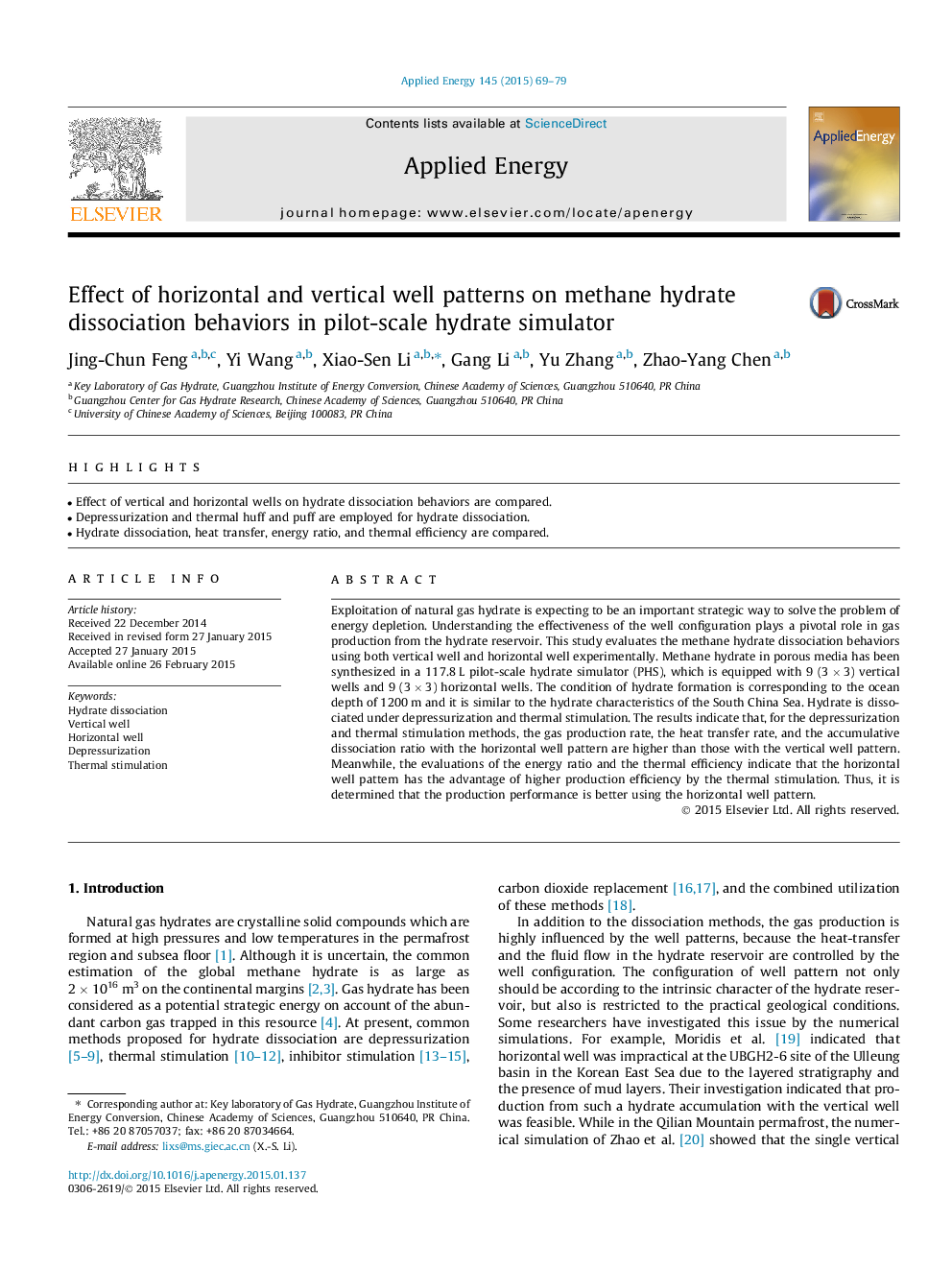| Article ID | Journal | Published Year | Pages | File Type |
|---|---|---|---|---|
| 242539 | Applied Energy | 2015 | 11 Pages |
•Effect of vertical and horizontal wells on hydrate dissociation behaviors are compared.•Depressurization and thermal huff and puff are employed for hydrate dissociation.•Hydrate dissociation, heat transfer, energy ratio, and thermal efficiency are compared.
Exploitation of natural gas hydrate is expecting to be an important strategic way to solve the problem of energy depletion. Understanding the effectiveness of the well configuration plays a pivotal role in gas production from the hydrate reservoir. This study evaluates the methane hydrate dissociation behaviors using both vertical well and horizontal well experimentally. Methane hydrate in porous media has been synthesized in a 117.8 L pilot-scale hydrate simulator (PHS), which is equipped with 9 (3 × 3) vertical wells and 9 (3 × 3) horizontal wells. The condition of hydrate formation is corresponding to the ocean depth of 1200 m and it is similar to the hydrate characteristics of the South China Sea. Hydrate is dissociated under depressurization and thermal stimulation. The results indicate that, for the depressurization and thermal stimulation methods, the gas production rate, the heat transfer rate, and the accumulative dissociation ratio with the horizontal well pattern are higher than those with the vertical well pattern. Meanwhile, the evaluations of the energy ratio and the thermal efficiency indicate that the horizontal well pattern has the advantage of higher production efficiency by the thermal stimulation. Thus, it is determined that the production performance is better using the horizontal well pattern.
